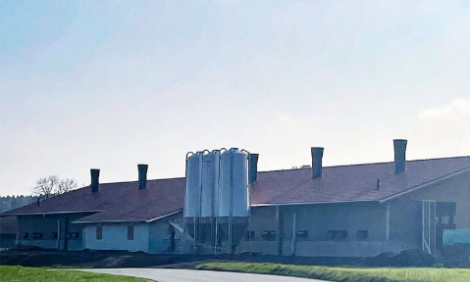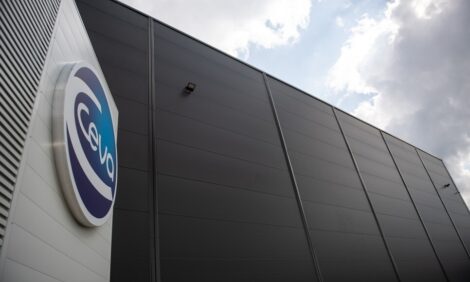



Cassava as Animal Feed in Ghana: Past, Present and Future
The use of cassava as a feed for ruminants and non-ruminants (poultry and pigs) in Ghana could reduce the high cost of feed, increase livestock production and create job opportunities, according to a new report from UN Food and Agriculture Organization (FAO).
The study on the use of cassava as animal feed in Ghana was commissioned as part of FAO’s initiative supporting poverty reduction in northern part of the country.
It is covered in the new report, Cassava as Animal Feed in Ghana: Past, Present and Future, by K. Oppong-Apane for the FAO.
The report includes the following chapters:
- Introduction to Ghana (location, population, agriculture)
- Livestock in Ghana
- Cassava (description, importance and uses
- Cassava production (global, in sub-Saharan Africa, in western Africa and in Ghana)
- Cassava supply and consumption as food (global and in Ghana)
- Use of cassava in animal feed globally
- Use of cassava as animal feed in Ghana
- Limitations/challenges to the use of cassava for livestock
- Detoxification of hydrocyanic acid for livestock feeding
- Response to cassava products and by-products by ruminants and non-ruminants in sub-Saharan Africa
- Research on cassava for animal feed in Ghana
- Evaluation of practical advantages and disadvantages of using cassava and its different fractions and preparations compared with other feed components in Ghana.
- Steps needed to realise sustainable and successful use of cassava-based feed resources in Ghana and future successful use of cassava-based feed resources in Ghana and future research needs
- SWOT analysis
- Conclusions and references
The summary of the report explains that cassava (Manihot esculenta) is one of the main staple food crops grown by almost all farming families in Ghana, contributing to large proportion of daily calorie intake of the population. It is used to prepare fufu, the local popular dish, and considered as the poor man’s food.
Ghana is the fourth largest cassava grower in Africa, after Nigeria, Democratic Republic of Congo and Angola. In 2010, Ghana produced 13.5 million tons of cassava. Available information suggests that, cassava is cultivated by over 90 per cent of the farming population and contributes to 22 per cent to the agricultural GDP, making it the right target for the fight against poverty in the country.
The multi-purpose use of cassava as food for humans and animals, making various industrial products, including its use as input for breweries, attracted many projects and programmes working on its value chain in Ghana. These projects, particularly the IFAD funded Root and Tuber Improvement Programme, introduced improved varieties for better yield, reduced post-harvest losses, improved agro-processing and better access to markets, etc. The various interventions enhanced production and marketing of cassava in the country improving income of producers and other actors involved in the value chain and generating more employment for women and youth, contributing in this way to poverty reduction.
FAO, with its comparative advantage of promoting agricultural and food production and rural development, is supporting poverty reduction initiatives in Ghana. In particular, FAO through its Strategic Objective three is implementing an initiative targeting reduction of rural poverty in Northern Ghana. One of the expected outputs of this initiative is to better equip beneficiaries create viable markets through agro-related livelihood activities linked to the cassava value chain. Among the activities contributing to this output, the livestock team has targeted linking livestock to the cassava value chain for poverty reduction, on which this study is based.
Cassava, in its different forms, has been used as animal feed in many parts of the world. Cassava foliage (leaves and stem), peels and particularly the root; fresh, dried or in silage form; alone or mixed with other feed is used in feeding different species of animals. Dried cassava roots are processed into pellets, chips and meal, mainly for poultry and pig industries.
Several studies conducted in West Africa showed that cassava in its different forms has large potential as animal feed. In countries like Ghana where livestock production is largely constrained by lack of good quality feed, the availability of alternative source of feed like cassava is important.
The main ingredient for producing feed for non-ruminant animals raised in intensive production is maize. Ghana produces maize but as the quantity is not adequate to cope with the year-round demand, from time to time, the country is obliged to import it. The fact that animal feed is produced with high cost, mainly due to the elevated cost of maize, makes poultry and pig production very expensive, constituting between 60 and 75 per cent of the total cost of production.
Because of high cost, many farmers, particularly pig producers, are shifting towards using agro-industrial by-products. Although cassava is an ideal partial substitute of maize as source of energy, livestock producers have not yet exploited this potential to the fullest. This can be attributed to the high moisture content of the cassava tuber, which makes handling, transportation and storage difficult. The poor content of cassava in protein, vitamin and some minerals could be another factor, which might have contributed to its low usage as animal feed in Ghana.
The high moisture levels of cassava which reduce its shelf-life and the high content of cyanogenic glycoside which releases toxic hydrocyanic acid, detrimental to the health and productivity of livestock as well as its low protein content are challenges which need to be addressed for the efficient use of the crop as animal feed in Ghana.
*
"The use of cassava as animal feed in Ghana can reduce the current high cost of feed, increase livestock production and create job opportunities"
Cassava roots can be sliced to appropriate thickness and dried using solar dryers, reducing in this way the moisture levels responsible for mould infestation and mycotoxin production. Slicing and drying cassava, in addition to extending its shelf life, reduces also the level of hydrocyanic acid to safe levels for animal feeding.
Lessons learned from projects implemented in the country in the past assist in setting up easy and affordable methods of slicing and drying cassava, according to the FAO report. The limitation of cassava due to its low content of protein, some vitamins and minerals, leading to rating it inferior to maize can also be corrected through proper balancing.
In order to enhance the demand and supply of cassava based feed in Ghana, it is necessary to develop viable intermediaries acting as secondary processors or bulking agents in the value chain and ensuring a consistent supply of raw and processed materials. The private sector can and should participate actively in this regard. Therefore, effective sensitisation of the actors involved in the cassava value chain on its potential and policy measures enabling its use as animal feed is required.
The use of cassava as animal feed in Ghana can reduce the current high cost of feed, increase livestock production and create job opportunities, concludes the FAO report.
The report's author adds that key to enhancing the demand and supply of cassava-based feed in Ghana is to develop viable intermediaries acting as secondary processors or bulking agents in the value chain and ensuring a consistent supply of raw and processed materials.
Reference
Oppong-Apane, K. 2013. Cassava as animal feed in Ghana: Past, present and future. Edited by Berhanu Bedane, Cheikh Ly and Harinder P.S. Makkar, FAO, Accra, Ghana
October 2013








